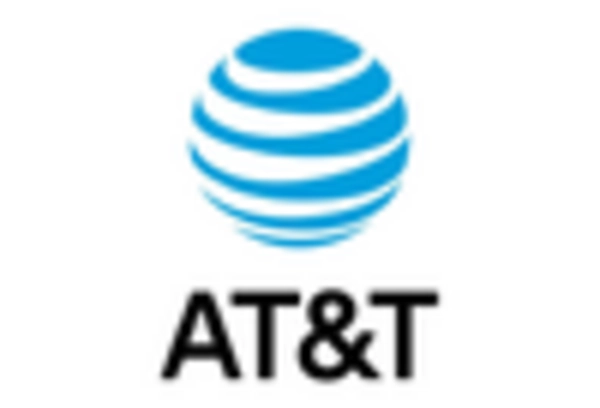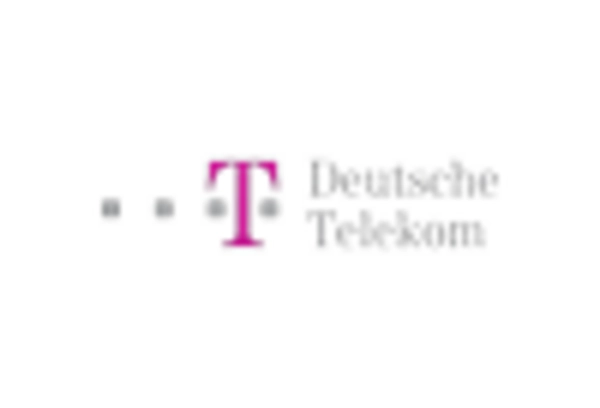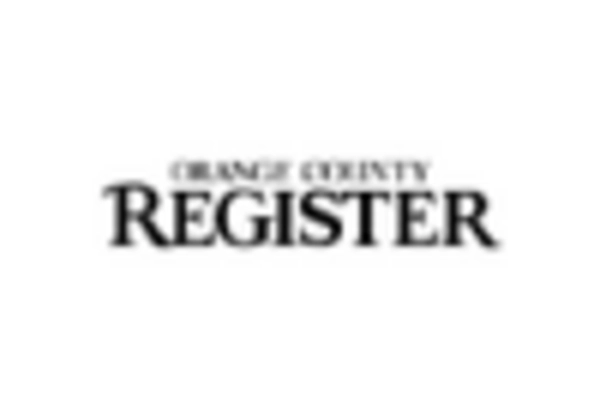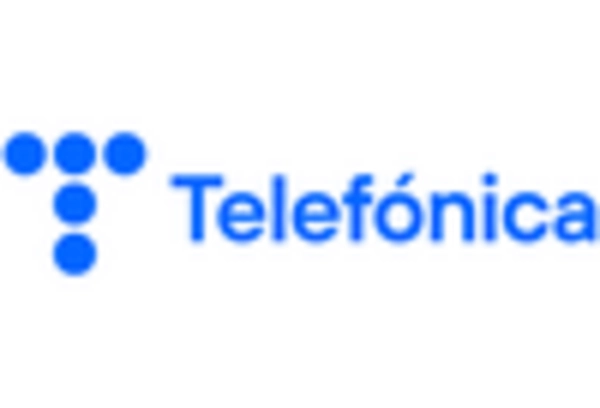Emergence of 5G Technology
The advent of 5G technology is poised to revolutionize the fixed mobile-convergence market. With its promise of ultra-fast data speeds and low latency, 5G is expected to enhance the integration of fixed and mobile services. As of November 2025, approximately 50% of the US population has access to 5G networks, and this number is anticipated to grow rapidly. The capabilities of 5G technology enable service providers to offer more robust and reliable solutions, thereby attracting a broader customer base. This technological advancement is likely to drive innovation within the fixed mobile-convergence market, as companies explore new applications and services that leverage the benefits of 5G connectivity.
Increased Investment in Infrastructure
Investment in infrastructure is a critical driver for the fixed mobile-convergence market. As telecommunications companies seek to enhance their service offerings, substantial capital is being allocated to upgrade existing networks and develop new technologies. Reports indicate that the US telecommunications sector is projected to invest over $100 billion in infrastructure improvements over the next five years. This investment is essential for supporting the growing demand for high-speed internet and mobile services. Enhanced infrastructure not only improves service quality but also enables providers to offer innovative solutions that integrate fixed and mobile services. The fixed mobile-convergence market stands to benefit significantly from these advancements, as they facilitate better connectivity and user experiences.
Rising Consumer Expectations for Connectivity
The fixed mobile-convergence market is experiencing a notable shift as consumer expectations for seamless connectivity continue to rise. Users increasingly demand integrated services that combine fixed and mobile offerings, leading to a more cohesive user experience. According to recent data, approximately 70% of consumers express a preference for bundled services that provide both mobile and fixed-line capabilities. This trend indicates a growing market for providers who can deliver comprehensive solutions. As competition intensifies, companies are likely to invest in enhancing their service quality and expanding their offerings to meet these expectations. The fixed mobile-convergence market must adapt to these changing consumer preferences to remain competitive and relevant.
Competitive Landscape and Market Consolidation
The competitive landscape of the fixed mobile-convergence market is evolving, with increasing consolidation among service providers. Mergers and acquisitions are becoming more common as companies seek to enhance their market position and expand their service offerings. This trend is driven by the need to achieve economies of scale and improve operational efficiencies. Recent analyses indicate that the number of mergers in the telecommunications sector has increased by 30% over the past two years. Such consolidation may lead to a more streamlined market, where larger players dominate, potentially impacting pricing and service availability. The fixed mobile-convergence market must navigate these changes carefully to maintain competitiveness and ensure customer satisfaction.
Shift Towards Remote Work and Digital Services
The ongoing shift towards remote work and digital services is significantly impacting the fixed mobile-convergence market. As businesses increasingly adopt flexible work arrangements, the demand for reliable and integrated communication solutions has surged. Data suggests that nearly 60% of companies in the US are investing in technologies that support remote collaboration, which often includes fixed and mobile service bundles. This trend indicates a growing opportunity for service providers to cater to the needs of businesses seeking comprehensive solutions. The fixed mobile-convergence market must respond to this demand by offering tailored services that facilitate effective communication and collaboration in a remote work environment.

















Leave a Comment